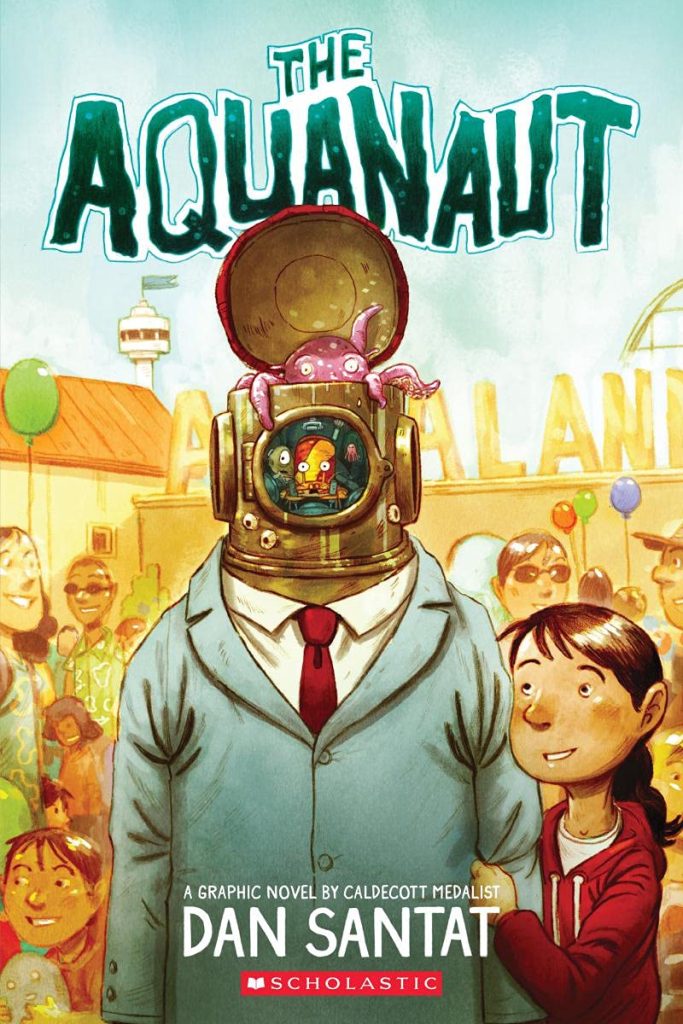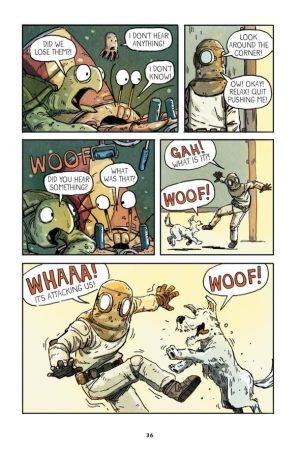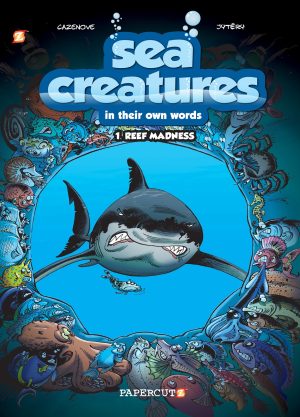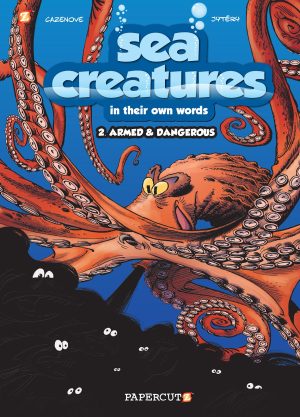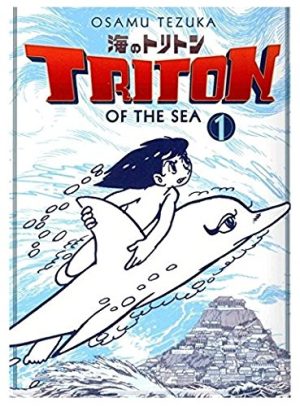Review by Frank Plowright
The Aquanaut’s bizarre cover is greater indication of Dan Santat’s intentions than the tragic sinking of a ship seen over the opening pages. Marine researcher Michel Revoy goes down with it, leaving teenage Sophia without a father. She spends a lot of time at Aqualand, co-founded by her father and Uncle Paul as a marine life sanctuary, and five years later it’s there one afternoon she meets the Aquanaut. It’s a group of friendly marine creatures in an old fashioned diving suit, and they have her father’s notebook, missing since the ship sank.
Santat has points to make, among them being some consideration of what humanity just dumps in the oceans, but this is mentioned in passing rather than hammered home. He also notes shows, demonstrations and petting encouraged at marine life centres is more detrimental than most people realise, and that becomes more central to the plot.
There’s a real charm to Santat’s cartooning. He’s good with personality and motion, and a scene near the end requires a complete change of scale, and Santat delivers that efficiently also.
While the sea creatures operating the diving suit are engaging in a smart-mouthed Disneyesque way, Sophia is the focus, and her continuing upset at losing her father at a very early age is easily understood, making her instantly sympathetic. Although he’s introduced as preoccupied and compromised, so is her Uncle Paul. Aqualand’s financier Mr. Lula is a little too much the cardboard rogue, but that won’t matter greatly to the young audience. With his moustache, he resembles a villain from the days of silent comedy films.
The Aquanaut is bookended by two scenes featuring a different mood from the remainder. While the opening sequence initiates the theme of loss and grieving that’s seen all the way through, it’s also out of place, and the necessary elements might have been differently handled. It’s pleasing that Santat doesn’t fall into the trap of providing too many explanations as the wonder of the experience is the priority, and that transmits, yet toward the end there’s another shift of tone. This merges more seamlessly with the remainder, and underlines that sometimes a step back is needed to take a few forward.
